
Studies in Eastern European Cinema
Scope & Guideline
Celebrating the Rich Heritage of Eastern European Cinematics
Introduction
Aims and Scopes
- Cinematic Representation of Historical and Societal Issues:
The journal emphasizes the analysis of how films from Eastern Europe reflect historical traumas, national identities, and societal challenges, particularly in the context of post-socialist transitions. - Cultural and Political Contextualization:
It seeks to contextualize films within their cultural and political landscapes, exploring the impact of historical events, such as the Cold War and post-Communism, on cinematic narratives. - Interdisciplinary Approaches:
The journal employs interdisciplinary methodologies, drawing from film studies, cultural studies, sociology, and history to provide comprehensive analyses of films. - Focus on Marginalized Voices:
It highlights the importance of marginalized perspectives within Eastern European cinema, including those of women, minorities, and underrepresented communities. - Globalization and Transnationalism:
The journal examines the effects of globalization on Eastern European cinema, exploring themes of co-productions, international collaborations, and the transnational circulation of films.
Trending and Emerging
- Post-Socialist Nostalgia:
There is a growing interest in exploring post-socialist nostalgia as a theme, particularly in how it shapes contemporary narratives and characterizations within Eastern European cinema. - Gender and Representation:
The journal has increasingly focused on gender issues, examining how films portray female experiences, victimization, and empowerment, indicating a broader cultural shift towards gender equity in cinematic narratives. - Transnational Cinema:
Emerging themes in transnational cinema reflect the interconnectedness of Eastern European films with global trends, exploring co-productions and international collaborations that challenge traditional notions of national cinema. - Documentary Film Culture:
There is an increased focus on documentary filmmaking as a means of cultural expression and social critique, highlighting the role of documentary films in representing contemporary issues in Eastern Europe. - Digital and New Media Influences:
The impact of digital technologies and new media on cinema is becoming a prominent theme, as filmmakers adapt to changing landscapes in production, distribution, and audience engagement.
Declining or Waning
- Traditional Socialist Realism:
There is a noticeable decrease in the exploration of traditional socialist realism as a theme, suggesting a shift towards more contemporary narratives that engage with post-socialist identities rather than adhering strictly to historical ideologies. - Classic Film Analysis:
The focus on classic Eastern European films has diminished, with fewer articles dedicated to older cinematic works, indicating a possible trend towards contemporary film studies over historical retrospectives. - Regional Specificity:
Research centered on highly specific regional cinema has waned, possibly due to a growing interest in broader themes that encompass multiple Eastern European countries rather than focusing on individual national cinemas. - Genre Studies:
There seems to be a decline in genre-specific studies, particularly those that do not engage with the socio-political contexts of the films, as the journal increasingly prioritizes thematic and contextual analyses.
Similar Journals
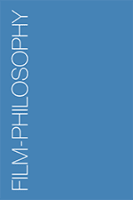
Film-Philosophy
Illuminating Philosophical Insights Through FilmFilm-Philosophy is an esteemed academic journal published by Edinburgh University Press, specializing in the intersection of film studies and philosophical discourse. Since its launch in 1998, this Open Access journal has provided a platform for scholarly debates and innovative research, allowing for free and unrestricted access to its content, which has significantly contributed to the global dialogue on visual culture. With a commendable impact illustrated by its Q1 ranking in Visual Arts and Performing Arts and Q2 in Philosophy, the journal sits within the top quartile of its field. Operating from the United Kingdom, Film-Philosophy is committed to fostering a multidisciplinary approach, inviting contributions from researchers, professionals, and students alike. By engaging with critical theories and the aesthetics of cinema, the journal stands as a vital resource for understanding the philosophical implications of film and its cultural significance.

CINEFORUM
Celebrating the Vibrancy of Visual and Performing ArtsCINEFORUM is a distinguished journal published by the FEDERAZIONE ITALIANA CINEFORUM, focusing on the vibrant field of Visual Arts and Performing Arts. With an ISSN of 0009-7039, this journal serves as a significant platform for researchers and practitioners interested in critical discussions and analyses pertaining to cinema and performance. Although coverage in Scopus discontinued in 2020, CINEFORUM has established its standing with a category ranking in the Q4 quartile for Visual Arts, reflecting its niche yet passionate readership in the arts community. Based in Bergamo, Italy, the journal aims to foster a deeper understanding of cinematic and performative texts, offering insights and scholarly contributions that enhance the discourse within these artistic domains. Catering to an audience that includes researchers, professionals, and students, CINEFORUM remains an essential resource for those looking to explore the intersection of theory and practice in cinema and performing arts.

MILLENNIUM FILM JOURNAL
Engaging Minds Through Interdisciplinary Film Scholarship.MILLENNIUM FILM JOURNAL, published by MILLENNIUM FILM WORKSHOP INC, stands as a pivotal platform for exploration and discourse within the realm of film studies. With its ISSN 1064-5586, the journal has been noteworthy in delineating the complexities of visual arts and performing arts, contributing significantly to academic scholarship between the years 2009 to 2016, and in 2018. Though its coverage has been discontinued in Scopus, the journal has attained a respectable position within its category, ranking #320 out of 502 in the Arts and Humanities field. Researchers, professionals, and students alike are invited to engage with interdisciplinary discussions that illuminate the cultural and theoretical dimensions of cinema. While currently not offering open access options, the journal continues to serve as a vital resource for those deeply invested in the study of film, making it a respected voice in visual arts and performance research.
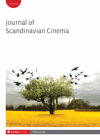
Journal of Scandinavian Cinema
Diving into the Innovations of Scandinavian CinemaThe Journal of Scandinavian Cinema, established in 2014 and published by INTELLECT LTD, serves as a premier platform dedicated to the interdisciplinary field of film studies with a specific focus on Scandinavian cinema. With an impressive Q2 category ranking in Visual Arts and Performing Arts for 2023, and a Scopus rank placing it in the top 62nd percentile of its category, this journal is instrumental in advancing scholarly dialogue within the arts community. The journal strives to explore and critique cinematic expressions from the Nordic countries, contributing to a nuanced understanding of cultural narratives and filmic innovations. Committed to fostering accessibility and engagement, it caters to a diverse audience including researchers, professionals, and students keen to delve into the artistic, cultural, and political dimensions of cinema. The Journal of Scandinavian Cinema is essential for anyone interested in the evolution and impact of film in the Scandinavian context, promising rich insights and a robust collection of scholarly articles.
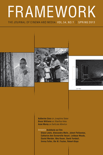
Framework-The Journal of Cinema and Media
Navigating the dynamic landscape of media.Framework: The Journal of Cinema and Media is a prominent academic journal published by Wayne State University Press, focusing on the dynamic fields of cinema studies and media theory. With an ISSN of 0306-7661 and an E-ISSN of 1559-7989, it serves as a key platform for researchers, professionals, and students to explore critical issues in media culture, film theory, and the intersection of digital technologies and narrative. Although it does not currently offer open access, the journal maintains a reputation for rigorous scholarship and thought-provoking content, providing insights that challenge conventional understandings of media and its impact on society. Published in Detroit, MI, Framework continues to engage with contemporary debates and innovative practices in cinema and media, making it an essential resource for those dedicated to advancing research in these vibrant disciplines.

FILM QUARTERLY
Navigating the Landscape of Cinema and CultureFilm Quarterly, published by University of California Press, stands as a leading academic journal in the field of visual arts and performing arts, boasting a prestigious Q1 ranking in the 2023 category quartiles. Since its inception in 1969, this quarterly publication has made significant contributions to the study and critique of cinema, attracting attention for its insightful articles, cutting-edge research, and comprehensive reviews that appeal to scholars, practitioners, and students alike. With an ISSN of 0015-1386 and an E-ISSN of 1533-8630, it serves as an essential resource for those seeking to enhance their understanding of film theory, history, and analysis. Although not open access, its articles are critical for researchers navigating the complex landscape of contemporary and historical film studies, underscoring its vital role in advancing scholarship within the discipline.
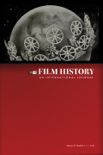
Film History
Illuminating cinema's past to inspire future narratives.Film History, published by Indiana University Press, is a premier academic journal that delves into the evolving landscape of cinema, illuminating the intricate interplay between historical narratives and film culture. With ISSN 0892-2160, and E-ISSN 1553-3905, this journal has established itself as a crucial resource for researchers, professionals, and students in the fields of history and visual arts. Recognized in the Q2 category for both History and Visual Arts and Performing Arts as of 2023, it boasts impressive Scopus rankings, securing #152 out of 667 in Visual Arts and Performing Arts, and #524 out of 1760 in History, placing it in the top 30th percentile. Although it does not currently offer open access options, the journal provides a wealth of scholarly articles that critically engage with film as a historical text, fostering a deeper understanding of its role in shaping societal narratives. Since its inception in 1987, Film History has been at the forefront of academic discourse, making it an invaluable resource for those seeking to explore the rich tapestry of cinematic history.

Etica & Cine
Highlighting the Ethical Implications of Screen NarrativesEtica & Cine is a distinguished open-access journal published by the University of Buenos Aires, Faculty of Psychology, dedicated to the interdisciplinary field of ethics in cinema and visual culture. With the ISSN 2250-5660 and E-ISSN 2250-5415, this journal has been a vital platform for researchers, professionals, and students since its inception in 2011, providing a space for critical discourse surrounding the ethical dimensions of film and media. The journal aims to foster scholarly dialogue by publishing high-quality articles that explore the philosophical, social, and psychological implications of filmic representations. While the journal's H-index is yet to be established, its commitment to open access ensures that valuable insights are readily available to a global audience, thus enhancing its significance in academic and professional circles. As the conversation around ethics in cinema continues to evolve, Etica & Cine stands as an essential resource for anyone engaged in this vital area of study.

CINEJ Cinema Journal
Unveiling the Dynamics of Cinema Studies.CINEJ Cinema Journal, published by the University of Pittsburgh Library System, stands as a pivotal platform for scholarly discourse in the dynamic field of cinema studies. With an ISSN of 2159-2411 and an E-ISSN of 2158-8724, this Open Access journal has been dedicated to disseminating high-quality research since its inception in 2011. CINEJ provides an essential resource for researchers, practitioners, and students alike, exploring varied dimensions of cinema, including its cultural, historical, and technological implications. The journal is committed to fostering interdisciplinary dialogue, making it a vital asset for those seeking to deepen their understanding of cinema as an art form and social phenomenon. By engaging with contemporary issues and trends in the cinematic landscape, CINEJ encourages contributions that illuminate the intersection of film and social inquiry, ensuring its relevance in today’s academic ecosystem.
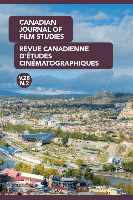
Canadian Journal of Film Studies-Revue Canadienne d Etudes Cinematographiques
Innovating Critical Discourse in Film StudiesCanadian Journal of Film Studies-Revue Canadienne d'Études Cinématographiques is a distinguished publication dedicated to the exploration of film studies within the context of Canadian cinema and global visual arts. Published by University of Toronto Press Inc., this journal offers a platform for innovative and critical scholarship, having achieved a notable Q2 ranking in the Visual Arts and Performing Arts category for 2023, with an impressive Scopus rank of 207 out of 667, positioning it in the 68th percentile among peers. With a continuous publication record since its established years from 1998 to 2001 and 2004 to 2024, it has become an essential resource for researchers, professionals, and students interested in the evolving landscape of film and cinema. The journal not only addresses theoretical perspectives but also engages with contemporary practices, thereby fostering a deeper understanding of cinematic arts. Despite not offering open access, it remains a vital repository of knowledge for those seeking to advance their studies and contribute to the discourse in film studies.